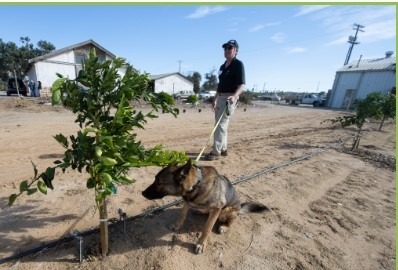- Author: Wendy Powers
If you've taken a Southwest flight in February, perhaps you read the article about Sierra, a dog that helped, repeatedly, detect cancer in her person. If you've seen the movie, “A Dog's Journey”, you are familiar with the incredible sense of smell that dogs possess and how it can be tuned for specific purposes. The article went on to discuss the use of electronic nose technology, or e-noses, for this same purpose. I had the chance to work with a 32-sensor e-nose as a graduate student at the University of Florida. The Food Science and Human Nutrition Department had the equipment and was testing it for off-flavors in orange juice and other foods. At the time, 20+ years ago, the technology was under development though some food and beverage companies were using the technology for quality control of ingredients. I recall reading an article in the Wall Street Journal touting that the e-nose technology would someday be used in telemedicine and even as part of home security systems because each human has a characteristic odor. Although I did purchase a portable e-nose for my research program while in Iowa, I was never able to develop the algorithm to accurately predict nuisance odors from farms. I attributed this to site-specificity of odors, poor ability by the e-nose sensors to detect sulfur-containing compounds, humidity interference, and other unidentified shortcomings of the technology. I am unconvinced that we are near an application where an instrument is a suitable surrogate for an animal or insect with highly developed olfactory senses. With that said, my own pooches seem to use their gift only for evil, digging up bulbs I planted while they weren't looking and such.
Fun fact: Manure odor is made up of well over 200 compounds, many of which are below a threshold detectable by humans. However, some of the prominent odor components that are offensive to most humans, are the very compounds that attract flies to fresh manure. Who knows when that information will come in handy?
I had a chance to read the most recent e-newsletter from the Citrus Research Board. The recap of the 2020 UCR Citrus Day talked about not only the honoring of Beth Grafton-Cardwell for all the great work that she has done over her impressive career, but also mentioned the afternoon sessions at the event that highlighted some of the work underway to use dogs to sniff out HLB and other diseases. One of the things we've heard from the UC/UC ANR team working with the dogs is that the dogs need to be in constant ‘training' so that they are exposed to the scent of the disease but also challenged in clean orchards.
I read a summary of the President's budget proposal. While USDA NIFA funding has a proposed increase, overall funding for research is down. This is troubling, to say the least, particularly given the societal challenges that need strong science to develop solutions. The bright spot is that AI and machine learning research have proposed increases across multiple agencies. Surely the work with dogs and e-noses represents competitive funding opportunities. I hope researchers are crafting their rationale statements to be ready when the requests for proposals come out. I wonder if there is a Multistate Research Project somewhere in the system for this topic.
Off to the first day of the World Ag Expo. Who knows what interesting things will be on display this year!




